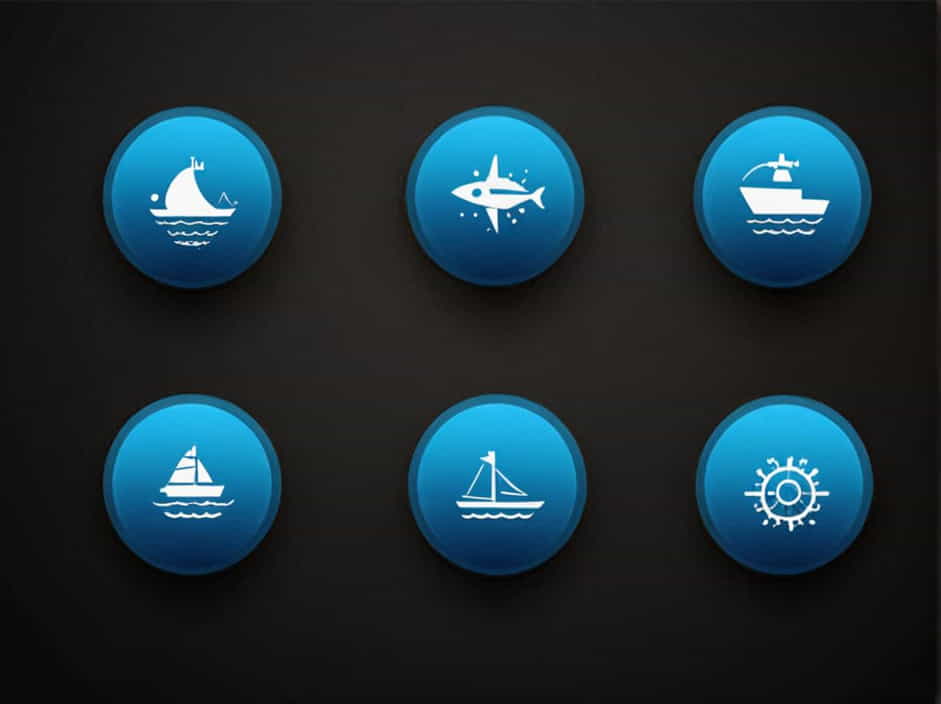Maritime navigation depends on accurate meteorological and oceanographic information to ensure the safety, efficiency, and reliability of voyages. Weather conditions, sea currents, tides, and ocean temperatures can significantly impact a vessel’s course, fuel consumption, and the overall success of a journey.
With modern technology, ship captains and navigators have access to advanced weather forecasting systems and oceanographic data, enabling them to make informed decisions that minimize risks and optimize travel routes.
This topic explores the importance of meteorological and oceanographic information in navigation, highlighting key aspects that every mariner should understand.
Meteorological Information in Navigation
Meteorology plays a crucial role in maritime navigation, helping seafarers predict weather conditions and avoid dangerous situations at sea.
1. Why Is Meteorological Information Important?
- Helps navigators avoid storms and extreme weather conditions.
- Reduces fuel consumption by planning efficient routes.
- Ensures crew and cargo safety.
- Enhances port operations and scheduling.
2. Key Meteorological Factors That Affect Navigation
a. Wind Patterns
- Strong winds can increase wave height and make navigation challenging.
- Tailwinds can help reduce fuel usage, while headwinds can slow down a vessel.
b. Storms and Hurricanes
- Severe storms can cause rough seas, reduced visibility, and damage to ships.
- Early detection allows vessels to alter course and avoid high-risk areas.
c. Fog and Visibility
- Reduced visibility increases the risk of collisions with other vessels or obstacles.
- Ships rely on radar and GPS systems during foggy conditions.
d. Atmospheric Pressure and Weather Fronts
- Changes in barometric pressure can indicate approaching storms or fair weather.
- Low-pressure systems are usually associated with stormy conditions.
3. How Ships Access Meteorological Data
- Satellite weather reports provide real-time updates.
- Onboard weather instruments measure wind speed, temperature, and pressure.
- Global Positioning Systems (GPS) help adjust routes based on weather forecasts.
Oceanographic Information in Navigation
Oceanography studies the physical and chemical properties of the ocean, which play a vital role in maritime navigation. Understanding oceanographic conditions helps optimize travel routes, improve fuel efficiency, and enhance safety.
1. Why Is Oceanographic Information Important?
- Helps ships navigate efficiently through ocean currents.
- Reduces the risk of grounding in shallow waters.
- Assists in fishing, offshore drilling, and environmental protection.
2. Key Oceanographic Factors That Affect Navigation
a. Ocean Currents
- Strong currents can push a vessel off course, affecting fuel efficiency.
- Ships use favorable currents, like the Gulf Stream, to increase speed and reduce travel time.
b. Tides and Water Levels
- Knowledge of tides is essential for entering and leaving ports safely.
- Tidal patterns influence coastal navigation and anchorage.
c. Wave Conditions
- Large waves increase fuel consumption and vessel instability.
- Rough sea conditions can delay cargo loading and unloading.
d. Water Temperature and Salinity
- Cold and warm ocean currents affect engine performance and fuel efficiency.
- Temperature differences impact marine ecosystems and fish migration patterns.
3. How Ships Access Oceanographic Data
- Tide tables and nautical charts provide information on water depth and tidal patterns.
- Satellite oceanography offers real-time monitoring of sea surface temperatures and currents.
- Buoy networks collect wave and current data for navigational safety.
The Role of Technology in Meteorological and Oceanographic Navigation
Advancements in technology have made meteorological and oceanographic data more accessible and accurate for modern ships.
1. Satellite Systems
- Provide real-time weather forecasts and oceanographic updates.
- Help vessels adjust routes to avoid storms and unfavorable currents.
2. Automatic Identification Systems (AIS)
- Improve vessel tracking and communication.
- Help ships navigate safely in congested waters.
3. Electronic Chart Display and Information Systems (ECDIS)
- Digital navigation charts with real-time updates on tides, currents, and weather conditions.
- Improve situational awareness for captains and crew.
4. Artificial Intelligence and Machine Learning
- AI-powered systems analyze historical weather data to predict future conditions.
- Help optimize routes for fuel efficiency and reduced emissions.
Case Study: The Impact of Weather and Ocean Conditions on Navigation
1. The Sinking of the Edmund Fitzgerald (1975)
- The freighter Edmund Fitzgerald sank in Lake Superior due to a severe storm.
- High waves and strong winds caused structural damage, leading to the tragedy.
- Improved weather forecasting today helps prevent similar incidents.
2. The Influence of the Gulf Stream on Transatlantic Voyages
- The Gulf Stream current accelerates west-to-east voyages across the Atlantic.
- Ships save fuel and time by navigating strategically with ocean currents.
Best Practices for Navigating with Meteorological and Oceanographic Data
1. Always Monitor Weather and Ocean Updates
- Check daily forecasts before departure.
- Use multiple sources for weather and oceanographic information.
2. Plan Alternative Routes
- Have backup routes in case of storms or strong currents.
- Keep communication open with coast guards and maritime agencies.
3. Train Crew on Weather and Ocean Awareness
- Ensure seafarers understand how to read weather maps and tide charts.
- Conduct drills and simulations for navigating in extreme conditions.
Meteorological and oceanographic information is essential for safe and efficient navigation. Weather conditions, ocean currents, tides, and wave patterns directly affect a vessel’s route, fuel efficiency, and safety.
With modern technology, seafarers have access to real-time data that helps them make informed decisions to avoid hazards, optimize routes, and protect crew and cargo. By continuously monitoring and adapting to changing conditions, maritime navigation becomes safer, more efficient, and environmentally friendly.
